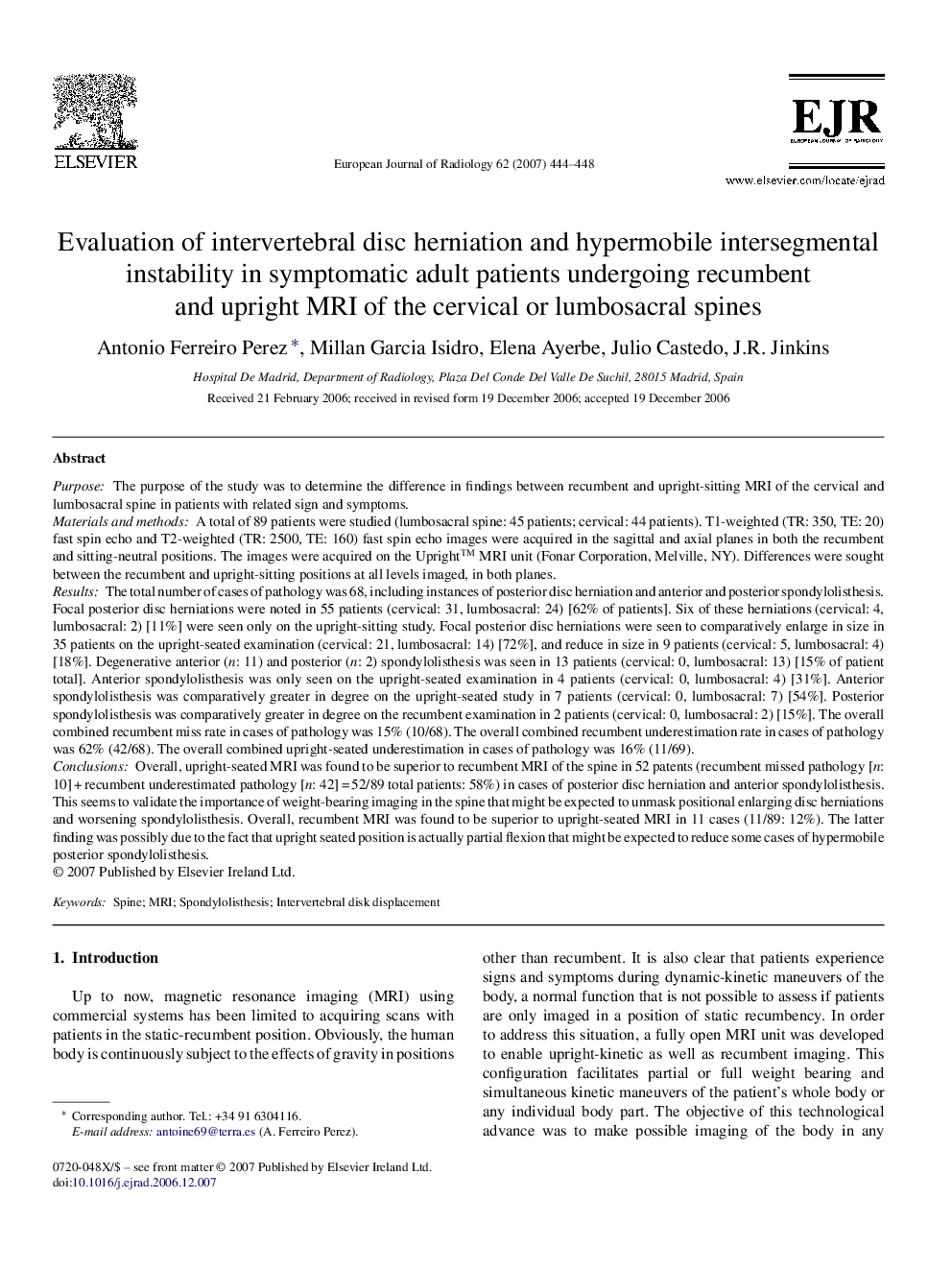| Article ID | Journal | Published Year | Pages | File Type |
|---|---|---|---|---|
| 4228168 | European Journal of Radiology | 2007 | 5 Pages |
PurposeThe purpose of the study was to determine the difference in findings between recumbent and upright-sitting MRI of the cervical and lumbosacral spine in patients with related sign and symptoms.Materials and methodsA total of 89 patients were studied (lumbosacral spine: 45 patients; cervical: 44 patients). T1-weighted (TR: 350, TE: 20) fast spin echo and T2-weighted (TR: 2500, TE: 160) fast spin echo images were acquired in the sagittal and axial planes in both the recumbent and sitting-neutral positions. The images were acquired on the Upright™ MRI unit (Fonar Corporation, Melville, NY). Differences were sought between the recumbent and upright-sitting positions at all levels imaged, in both planes.ResultsThe total number of cases of pathology was 68, including instances of posterior disc herniation and anterior and posterior spondylolisthesis. Focal posterior disc herniations were noted in 55 patients (cervical: 31, lumbosacral: 24) [62% of patients]. Six of these herniations (cervical: 4, lumbosacral: 2) [11%] were seen only on the upright-sitting study. Focal posterior disc herniations were seen to comparatively enlarge in size in 35 patients on the upright-seated examination (cervical: 21, lumbosacral: 14) [72%], and reduce in size in 9 patients (cervical: 5, lumbosacral: 4) [18%]. Degenerative anterior (n: 11) and posterior (n: 2) spondylolisthesis was seen in 13 patients (cervical: 0, lumbosacral: 13) [15% of patient total]. Anterior spondylolisthesis was only seen on the upright-seated examination in 4 patients (cervical: 0, lumbosacral: 4) [31%]. Anterior spondylolisthesis was comparatively greater in degree on the upright-seated study in 7 patients (cervical: 0, lumbosacral: 7) [54%]. Posterior spondylolisthesis was comparatively greater in degree on the recumbent examination in 2 patients (cervical: 0, lumbosacral: 2) [15%]. The overall combined recumbent miss rate in cases of pathology was 15% (10/68). The overall combined recumbent underestimation rate in cases of pathology was 62% (42/68). The overall combined upright-seated underestimation in cases of pathology was 16% (11/69).ConclusionsOverall, upright-seated MRI was found to be superior to recumbent MRI of the spine in 52 patents (recumbent missed pathology [n: 10] + recumbent underestimated pathology [n: 42] = 52/89 total patients: 58%) in cases of posterior disc herniation and anterior spondylolisthesis. This seems to validate the importance of weight-bearing imaging in the spine that might be expected to unmask positional enlarging disc herniations and worsening spondylolisthesis. Overall, recumbent MRI was found to be superior to upright-seated MRI in 11 cases (11/89: 12%). The latter finding was possibly due to the fact that upright seated position is actually partial flexion that might be expected to reduce some cases of hypermobile posterior spondylolisthesis.
